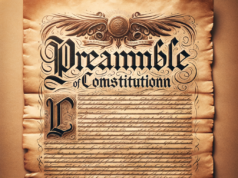Table of Contents
- 1 Understanding Federalism: A Framework for Governance in Diverse Societies
- 2 The Historical Context of Federalism and Its Evolution Over Time
- 3 Local Governance: Defining Roles and Responsibilities in a Federal System
- 4 Tensions Arising from Federalism: Conflicts Between State and Local Authorities
- 5 Case Studies: Examining Federalism’s Impact on Local Governance Dynamics
- 6 Strategies for Enhancing Collaboration Between Federal and Local Governments

Federalism, a system of governance that divides power between a central authority and constituent political units, plays a crucial role in shaping the dynamics of local governance. As societies become increasingly diverse, the complexities of federalism can lead to both opportunities and challenges for local authorities. This article explores the intricate relationship between federalism and local governance, examining historical contexts, defining roles, and addressing the tensions that arise from this multifaceted system.
Understanding Federalism: A Framework for Governance in Diverse Societies
Federalism is a governance model designed to accommodate the diverse needs and interests of various regions within a nation. By distributing authority between national and local governments, federalism aims to empower local entities to address specific community issues while maintaining a cohesive national policy framework. This duality allows for tailored governance that can respond effectively to local demands, fostering a sense of autonomy and representation among citizens. However, the balance of power can often lead to friction, as local governments navigate their responsibilities within the broader context of federal mandates and regulations.
The Historical Context of Federalism and Its Evolution Over Time
The roots of federalism can be traced back to the formation of early nation-states, where the need to unify diverse groups under a single governance structure became paramount. The United States, often cited as a model of federalism, adopted this system in the late 18th century, balancing the powers of state and federal governments. Over time, federalism has evolved, influenced by historical events such as the Civil War, the New Deal, and the Civil Rights Movement, which have reshaped the relationship between different levels of government. This evolution reflects the ongoing struggle to define the boundaries of authority and responsibility, as well as the need to adapt to changing societal needs.
Local Governance: Defining Roles and Responsibilities in a Federal System
In a federal system, local governance plays a pivotal role in implementing policies and delivering services that directly affect citizens’ daily lives. Local authorities are tasked with responsibilities ranging from education and public safety to infrastructure and zoning. However, the delineation of roles can be ambiguous, leading to overlaps and gaps in governance. Local governments often rely on federal and state funding, which can come with stipulations that may not align with local priorities. This interdependence necessitates clear communication and collaboration to ensure that local needs are met while adhering to broader federal and state objectives.
Tensions Arising from Federalism: Conflicts Between State and Local Authorities
The relationship between state and local authorities is often fraught with tension, as conflicting interests and priorities can lead to disputes over governance. Local governments may find themselves at odds with state mandates that do not reflect the unique needs of their communities. For instance, state-level policies on education funding or public health can disproportionately impact local jurisdictions, leading to calls for greater autonomy. Additionally, federal interventions, such as mandates or funding conditions, can further complicate local governance, creating a landscape where local officials must navigate competing directives from multiple levels of government.
Case Studies: Examining Federalism’s Impact on Local Governance Dynamics
Several case studies illustrate the complexities of federalism and its impact on local governance. In the United States, the response to the COVID-19 pandemic highlighted the challenges of coordinating efforts between federal, state, and local authorities. While federal guidelines provided a framework for public health responses, local governments often had to tailor their strategies to fit the specific needs of their communities. Similarly, in Canada, the implementation of environmental policies has seen provinces and municipalities grappling with federal regulations that may not align with local environmental priorities. These examples underscore the necessity of understanding the unique dynamics at play within federal systems and the importance of fostering cooperation among different levels of government.
Strategies for Enhancing Collaboration Between Federal and Local Governments
To mitigate tensions and enhance collaboration between federal and local governments, several strategies can be employed. Establishing clear lines of communication is essential, allowing for ongoing dialogue and feedback between different levels of governance. Additionally, creating frameworks for joint decision-making can empower local authorities to have a voice in federal and state policy development. Training programs that educate local officials about federal regulations and funding opportunities can also facilitate better alignment of goals. Ultimately, fostering a culture of collaboration and mutual respect is key to ensuring that federalism serves its intended purpose of promoting effective governance in diverse societies.
The interplay between federalism and local governance is a complex and evolving relationship that reflects the diverse needs of society. As tensions arise from conflicting interests and responsibilities, it becomes increasingly important to seek strategies that enhance collaboration and communication among different levels of government. By understanding the historical context and defining clear roles, stakeholders can work towards a more harmonious governance framework that effectively addresses the challenges and opportunities presented by federalism.
























